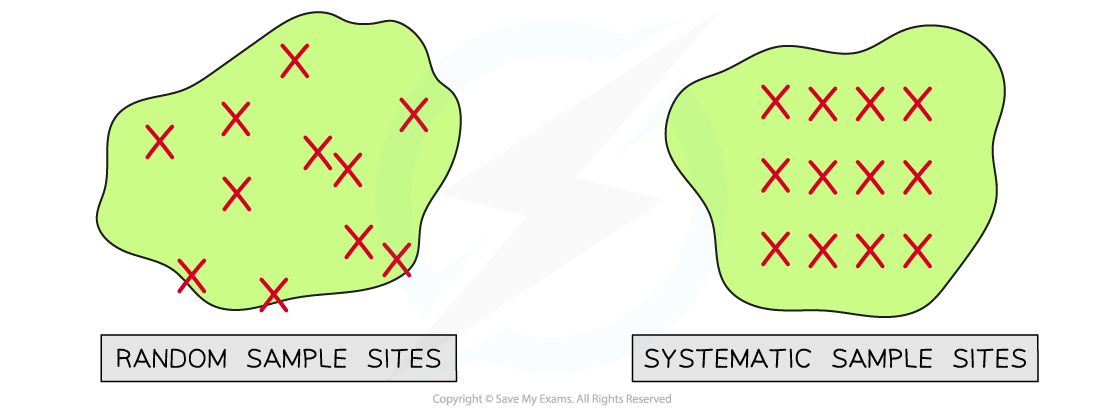- 翰林提供学术活动、国际课程、科研项目一站式留学背景提升服务!
- 400 888 0080
CIE A Level Biology复习笔记18.2.3 Random Sampling
Random Sampling
- Measuring the different levels of biodiversity within an ecosystem can be a tasking job
- Finding out which species live in an ecosystem and the size of the populations requires the identification and cataloguing of all organisms present to build a species list
- This is possible for areas that are very small or where the species are very large like trees
- However, for larger and more complex ecosystems like rainforests, it is simply impossible to find, identify and count every organism that exists there
- When this is the case different samples of the area can be taken and used to make an estimate for the total species numbers in the area
Sampling
- Sampling is a method of investigating the abundance and distribution of species and populations
- There are two different types of sampling:
- Random
- Systematic
- In random sampling the positions of the sampling points are completely random or due to chance
- This method is beneficial because it means there will be no bias by the person that is carrying out the sampling that may affect the results
- In systematic sampling the positions of the sampling points are chosen by the person carrying out the sampling
- There is a possibility that the person choosing could show bias towards or against certain areas
- Individuals may deliberately place the quadrats in areas with the least species as these will be easier and quicker to count
- This is unrepresentative of the whole area
- When a sampling area is reasonably uniform or has no clear pattern to the way the species are distributed then random sampling is the best choice

Random sampling differs from systematic sampling when choosing sample sites on an island
转载自savemyexams

最新发布
© 2025. All Rights Reserved. 沪ICP备2023009024号-1









